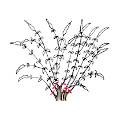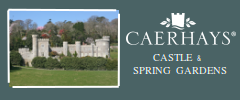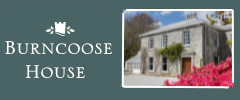Plants by mail order since 1984, over 4100 plants online today
Nursery & Gardens open: Mon - Sat 8:30 - 17:00 & Sun 10:00 - 16:00
Pop up café: open weather dependent
- Shop Now
- Burncoose Specialities
- This Month
- Offers & Promotions
- RHS Chelsea Flower Show 2024
- 40 years at Burncoose
- Engage With Us
- Information, Help & Advice
- About Us & Our Services
- Terms & Conditions
- Log In / Register
CORNUS sanguinea 'Midwinter Fire'
Commonly known as Common dogwood, Dogberry
COLOURED STEMMED DOGWOODS
Branches orange-yellow and red in winter, an attractive new cultivar
Further Reading....
-
Deciduous
-
 Cream
Cream -
 Height1.5m (5ft)
Height1.5m (5ft) -
 Spread80cm (32in)
Spread80cm (32in) -
Dwarf shrubTypically only grows to a maximum of one or two feet in height but there will be some exceptions.Produces white flowers in flat cymes followed by pea-sized blue-black fruit. Orange-yellow and red stems in winter.
-
 Hardy - very cold winterHardy in all of UK and northern Europe. Plant can possibly withstand temperatures down to -20°C (-4°F)
Hardy - very cold winterHardy in all of UK and northern Europe. Plant can possibly withstand temperatures down to -20°C (-4°F) -
 Full sunFor best winter colour.
Full sunFor best winter colour. -
 Partial shade
Partial shade
CORNUS sanguinea 'Midwinter Fire'
- Details
- Description
- Mature Size
- Tips and Advice
- Goes Well With
- Planting Combinations
- Other Suggestions
- See Also...
-
Additional Features
 Good to knowPrune about a third of the stems back to 2-3 buds above the base in spring. This leaves a framework of stems, allowing new growth to colour for winter. Wildlife plant - bees and other insects.Ornamental bark
Good to knowPrune about a third of the stems back to 2-3 buds above the base in spring. This leaves a framework of stems, allowing new growth to colour for winter. Wildlife plant - bees and other insects.Ornamental bark Pests & DiseasesAnthracnose.
Pests & DiseasesAnthracnose. Place of originEurope (garden origin, Germany. Named in 1990)
Place of originEurope (garden origin, Germany. Named in 1990) -
Garden Location/ConditionsCoastal / windsweptSuitable for small gardens
-
HardinessFully hardy
-
Leaf margin
 Entire
Entire(see photos above) -
Leaf shape
 Ovate
Ovate(see photos above) -
Pruning group
 Pruning group 4Suitable for: Deciduous trees and shrubs that flower on current year's growth or are grown for winter stem effect.
Pruning group 4Suitable for: Deciduous trees and shrubs that flower on current year's growth or are grown for winter stem effect.
Pruning: Hard prune to a low permanent framework.
When: Annually in early Spring.
-
Seasonal InterestAutumnWinter
-
Soil ConditionsFertile moist well-drained soilTolerates allWet or boggy soil
-
Wildlife
 Bee friendlyRabbit Resistant
Bee friendlyRabbit Resistant
Jan
Feb
Mar
Apr
May
Jun
Jul
Aug
Sep
Oct
Nov
Dec
Cornus (Flowering) - Growing Guide
- Positioning
- Planting
- Maintenance - Video Tip ondemand_video
- Propagation
- Cornus capitata seed collection - Video Tip ondemand_video
- Diseases
- Cornus capitata - Video Tip ondemand_video
- Cornus kousa 'Satomi' - Video Tip ondemand_video
- Cornus kousa ‘Doubloon’ - Video Tip ondemand_video
Cornus Coloured Stemmed Dogswoods - Growing Guide
|
1.5m (5ft)
|
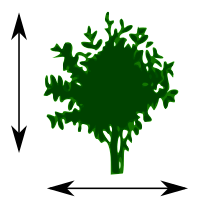
|

|
|
80cm (32in) |
Useful extras...

Fertilisers & Feeds - Vitax
Q4 Pelleted Fertiliser
A useful fertiliser suitable for use on a wide variety of plants. Q4 provides all the nutrients and trace elements essential for vigorous growth, abundant flowering and ripening of fruit.
3 options from £6.00
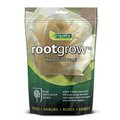
Fertilisers & Feeds - Empathy
Rootgrow mycorrhizal fungi
Recommended by the RHS. Contains Rootgrow™ mycorrhizal fungi. Suitable for all trees and shrubs (except rhododendrons, azaleas, heathers, cranberries and blueberries)
3 options from £3.00

Fertilisers & Feeds - Empathy
All-purpose Seaweed Stimulant
All-purpose organic concentrated seaweed feed that is a ready to use, derived from sustainable harvested kelp, that can be used on all outdoor and indoor plants, except acid loving plants.
Perfect used in conjunction with Rootgrow™.
Only £7.50
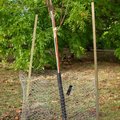
Vermin & Pest Control
Tree Guards
Essential small tree protection from vermin and strimming. This pack includes 5 x 90cm canes and 5 x 90cm spiral guards. Includes instructions.
Only £5.00
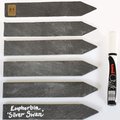
Garden Goodies
Slate Plant Labels
These wonderfully tactile natural slate plant labels are hand made in Cornwall and come with a chalk pen.
Just stick them in your pot or border. Pack of 6.
Only £10.00
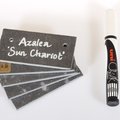
Garden Goodies
Slate Tie-on Plant Labels
Hand made in Cornwall, these delightful natural slate labels are perfect for pots.
Comes with chalk pen. Pack of 5
Only £10.00









